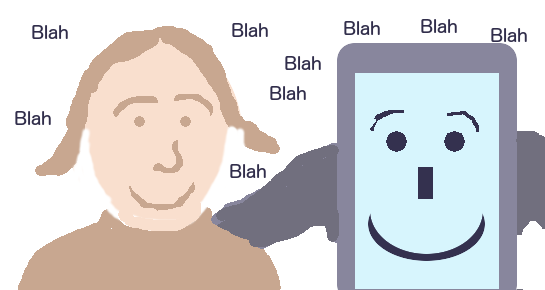Thinking back to my old Sony Ericcson P990, back in the mid noughties, I would have loved to replace it with an Android phone.
The P990 was a geek phone. It had no battery life, but it had an amazing array of features. I once reconfigured it to use an international dial up internet connection, to post an email from a beach in Thailand, where no mobile internet was available (at the time). You can’t do that with a modern phone. But the P990 was in my opinion utterly unusable, unless you knew an awful lot about IT.
Compared to that, Android is a dream for ordinary users – most of the functions can be accessed without arcane messing with the settings, the app paradigm is simple and intuitive – what could be better?
The answer of course is iPhone. I tried switching my wife to an Android phone a few years ago, when she needed a new phone (I needed a new test device, budget was tight) – she hated it.
I had to buy my wife a new iPhone when she threatened to throw the Android phone out the window of the car. It kept stalling her, tripping her up with sudden eruptions of complexity, which she needed me to fix – something she never had to fear when using an iPhone.
Granted her phone ran Gingerbread, and new versions of Android are far better.
Android is good, many people use it and love it. Android Apps can do things iPhone Apps are forbidden from doing. An Android app can send email or SMS on your behalf (once you grant fairly scary permissions before installation), which opens a vast range of desirable functionality, such as apps which create personalised SMS messages.
Android apps can run background processes (iPhone is very limited in this regard, though less so with iOS 7), and Android apps have far fewer limitations when it comes to app store approval – so it is possible to configure Android apps and Android phones to do really useful tasks, which simply cannot be done on an iPhone, unless you jailbreak it.
But iPhone has one, towering advantage of Android – it doesn’t scare people. It doesn’t deter people who are uncomfortable with geek devices.
This in my opinion is the source of iPhone’s loyalty – people who don’t like tech, feel comfortable using an iPhone. This simple, powerful advantage is what makes iPhone special.
It remains to be seen whether Apple iPhone can maintain this advantage. Android is catching up – each generation of the Android operating system is a little easier to use, a little less threatening to people who can’t stand geek tech.
The next version of Android may be the breakthrough which levels the playing field.


